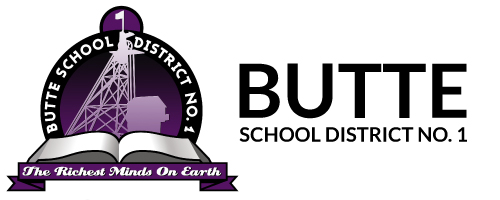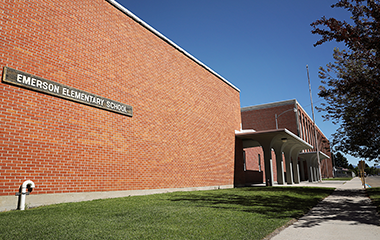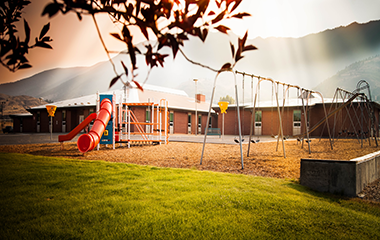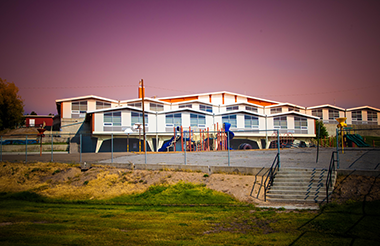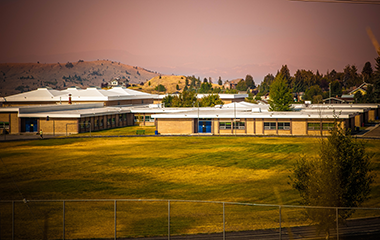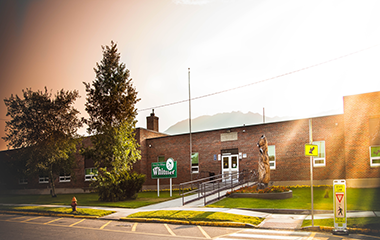Professional Development Plan: Butte School District
Vision Statement The Butte School District is committed to fostering a culture of continuous learning and professional growth. Our professional development (PD) initiatives aim to equip educators with innovative strategies, effective tools, and evidence-based practices to meet the diverse needs of all students and ensure academic excellence.
Goals
-
Enhance instructional practices through research-based strategies that align with district and state standards.
-
Foster student-centered learning environments that promote equity, inclusion, and diversity.
-
Integrate technology effectively to enhance teaching and learning.
-
Build capacity for collaborative professional learning communities (PLCs).
-
Improve educator retention through targeted support and mentoring programs.
-
Provide professional development opportunities in the area of safety and security of students and staff.
District Professional Development Advisory Committee To ensure the success and alignment of professional development initiatives, the Butte School District will establish a District Professional Development Advisory Committee. This committee will have its first meeting in January and will include representatives from various roles within the district. Members of the committee are:
- District Superintendent
- Elementary School Principal
- Middle School Principal
- High School Principal
- Transportation and Maintenance Director
- Food Service Director
- Informational Technology Specialist
- Curriculum Director
- Special Education Director
- Human Resource Director
- District Nurse
- 2 Board Members
- 4 Elementary Teachers
- 2 Middle School Teachers
- 4 High School Teachers
- 2 Instructional Coaches
The committee will collaborate to plan, implement, and evaluate professional development activities, ensuring alignment with district goals and addressing the diverse needs of all stakeholders.
Core Areas of Focus
- Curriculum and Instruction: Align curriculum with state standards and introduce differentiated instructional strategies.
- Social-Emotional Learning (SEL): Promote SEL frameworks to support student and staff well-being.
- Technology Integration: Train staff in the use of digital tools to enhance teaching and learning.
- Data-Driven Instruction: Develop skills to analyze and use student data to inform instruction.
- Culturally Responsive Teaching: Provide training to build inclusive classrooms that respect and celebrate diversity.
- Transformational/Personalized Learning: Provide training on proficiency based instruction and learning opportunities.
- Safety and Security: Offer training on emergency preparedness, crisis management, and creating a secure learning environment.
Alignment with District Goals and Requirements This professional development plan is designed to meet the following requirements: (a) Aligns with the district graduate profile and educational goals outlined in the district integrated strategic action plan as described in ARM 10.55.601. (b) Addresses the safety, well-being, and mental health of students and staff. (c) Focuses on teachers as central to student learning and includes all other members of the school community. (d) Emphasizes individual, collegial, and organizational learning, reflection, and growth. (e) Respects and nurtures the intellectual and leadership capacity of teachers, principals, and others in the school community by incorporating active learning and adult learning theory. (f) Reflects research and demonstrates models of effective practice in teaching, learning, and leadership. (g) Enables teachers to develop further expertise in subject content, teaching strategies, uses of technologies, and other essential elements in teaching to high standards. (h) Offers opportunities for feedback and reflection. (i) Ensures professional development is ongoing and sustained. (j) Is collaboratively planned by participants and facilitators. (k) Requires substantial time, resources, and practical coaching and expert support. (l) Embeds professional development in daily practice to encourage teachers to meet, share, collaborate, and grow. (m) Is driven by a coherent long-term plan. (n) Evaluates the impact on teacher effectiveness and student learning, using results to guide subsequent professional development.
Implementation Timeline
Phase 1: Needs Assessment (January-February)
- Conduct surveys, focus groups, and classroom observations to identify staff needs.
- Analyze student achievement data and state assessment results.
- Meet with department heads and school leaders to determine priority areas.
- Engage stakeholders, including directors, staff members, and board members, for input on professional development priorities.
Phase 2: Planning and Design (March-May)
- Develop a PD calendar outlining workshops, coaching sessions, and collaboration opportunities.
- Partner with external experts, universities, or educational organizations for specialized training.
- Create a system for evaluating PD outcomes.
- Incorporate interdisciplinary collaboration opportunities to enhance cross-subject teaching.
Phase 3: Delivery (Year-Round)
- PIR Days/ School-Year Workshops: Focused sessions on core areas such as differentiated instruction, SEL, and technology integration.
- PLC Meetings: Weekly or biweekly teacher collaboration on lesson planning and data analysis.
- Coaching Cycles: One-on-one or small group coaching by instructional coaches.
- Online Learning: Self-paced courses and webinars available through PD platforms.
- Emergency Preparedness Training: Sessions on crisis management and safety protocols for staff.
Phase 4: Reflection and Evaluation (December-January)
- Collect feedback from participants through surveys and focus groups.
- Evaluate student achievement data to assess PD impact.
- Adjust and refine PD initiatives for the following year based on findings.
- Recognize and celebrate teacher achievements and growth through awards and events.
Professional Development Opportunities
- Workshops: Periodic and as needed in-depth sessions on specific topics (e.g., differentiated instruction, classroom management).
- Coaching: Instructional coaches provide personalized support for teachers.
- Conferences: Opportunities for staff to attend regional or national education conferences.
- Online Resources: Access to platforms such as Microsoft 365 and professional learning networks.
- Mentoring Program: Pair new teachers with experienced mentors for ongoing guidance and support.
- Instructional Rounds: Collaborative process where educators observer and analyze classroom practices to improve teaching and learning.
- Safety and Security Training: Practice and table top drills focused on emergency preparedness, crisis response, and maintaining a safe school environment.
Resources Needed
- Funding for external trainers and materials.
- Access to technology and digital tools.
- Substitute teachers for coverage during PD sessions.
- Dedicated time for PLC meetings and coaching sessions.
- Recognition program resources to celebrate teacher growth and innovation.
Evaluation Metrics
- Teacher Feedback: Surveys and focus groups to assess satisfaction and relevance of PD.
- Student Performance: Analysis of standardized test scores and formative assessments.
- Implementation Fidelity: Classroom observations to monitor the application of PD strategies.
- Retention Rates: Tracking of teacher retention and satisfaction.
- Stakeholder Input: Feedback from parents, students, and community members on PD impact.
Conclusion This professional development plan reflects the Butte School District’s dedication to fostering an environment of growth and collaboration. By investing in our educators, we aim to empower them to inspire and challenge every student, every day.
This site provides information using PDF, visit this link to download the Adobe Acrobat Reader DC software.
